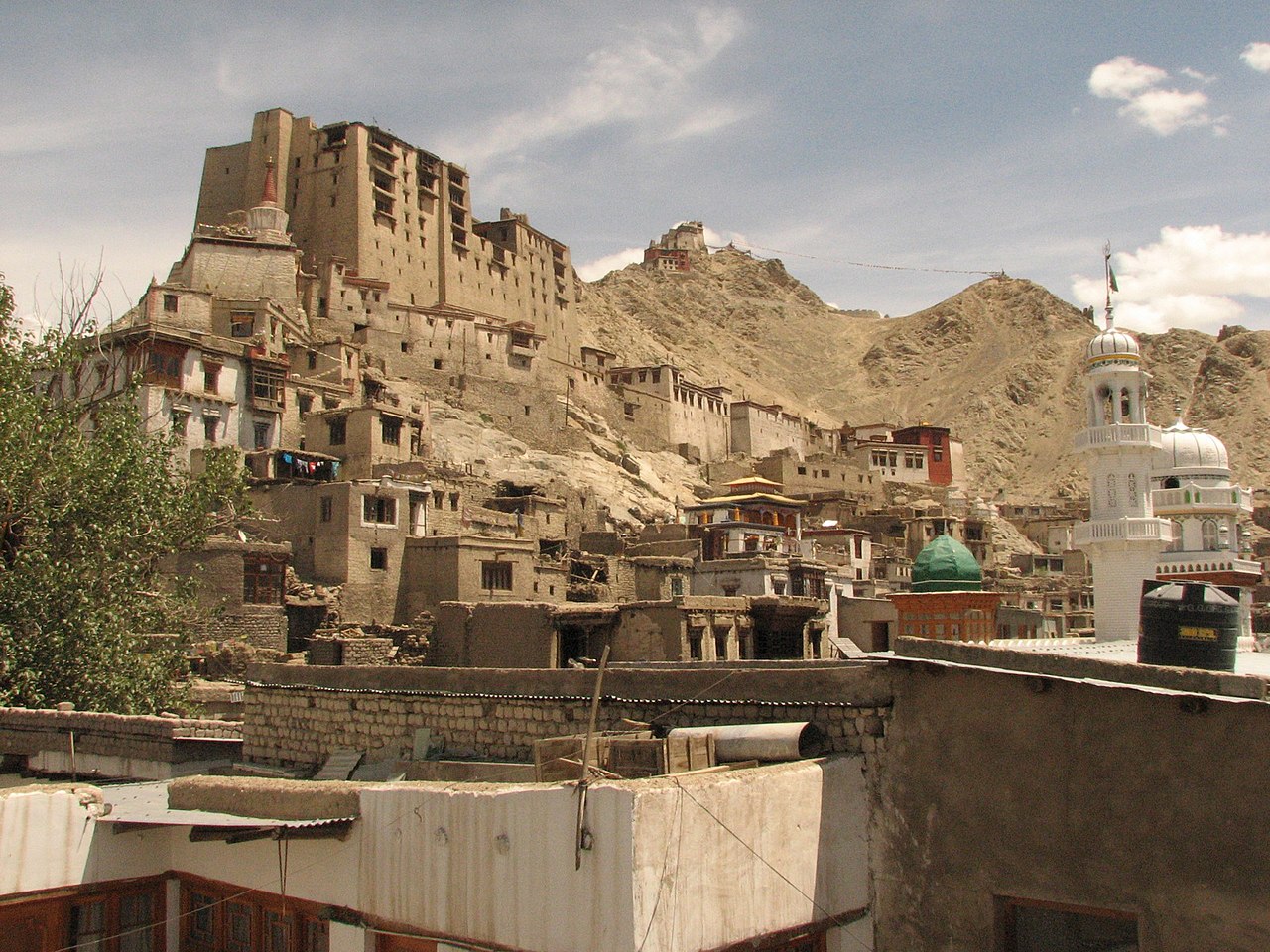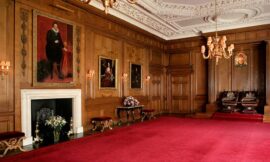Perched majestically on a hill in the heart of Leh, the capital of Ladakh, Leh Palace stands as a silent sentinel, bearing witness to the rich cultural history and architectural splendor of this high-altitude region. With its commanding presence against the backdrop of the Himalayas, Leh Palace is not only a testament to the royal heritage of Ladakh but also a symbol of resilience against the test of time.
Historical Significance: Built in the 17th century by King Sengge Namgyal, Leh Palace served as the royal residence for the Namgyal dynasty. The construction of the palace began in 1553 and was completed in the 17th century, making it one of the earliest royal residences in Ladakh. The palace is strategically located to offer panoramic views of the surrounding valleys, the Stok Kangri range, and the mighty Indus River.
Architectural Marvel: Leh Palace is an exemplary piece of medieval Tibetan architecture, reflecting the influence of the Tibetan style prevalent in the region. The nine-story structure, made primarily of mud bricks, stones, and wood, stands as a testament to the craftsmanship of the artisans of that era. The palace is adorned with intricate woodwork, murals, and ornate balconies, showcasing the artistic finesse of Ladakhi craftsmanship.
The palace’s architecture is characterized by its tapering walls, arched windows, and sloping roofs. The structure, with its symmetrical design, reflects the influence of Tibetan fort architecture, while the ornate wooden balconies and windows exhibit the delicate artistry that was prevalent during the construction period.
Royal Quarters and Halls: Leh Palace comprises a series of courtyards and rooms that served various purposes for the royal family. The rooms on the higher floors were the living quarters for the royal family, while the lower floors housed stables and storehouses. The palace also includes a grand assembly hall, where important ceremonies and religious functions were conducted.
One of the standout features of the palace is the old prayer room, adorned with exquisite murals depicting religious themes. The Namgyal Tsemo Gompa, located nearby, is another religious structure associated with the royal family and offers a glimpse into the spiritual aspects of the Namgyal dynasty.
Decline and Restoration: Over the centuries, Leh Palace faced a period of decline, particularly after the Dogra forces invaded Ladakh in the mid-19th century. The royal family shifted to the Stok Palace, leaving Leh Palace in a state of neglect. However, in recent times, efforts have been made to restore and preserve this architectural gem. The Archaeological Survey of India (ASI) has undertaken restoration work to ensure the structural integrity of the palace and to revive its cultural significance.
Panoramic Views and Tourist Attraction: Leh Palace, with its strategic location, offers breathtaking views of the surrounding landscape. Visitors to the palace are treated to panoramic vistas of the Leh town, the Indus River, and the distant snow-capped peaks. The setting sun bathes the palace in a warm glow, creating a picturesque backdrop for photographers and enthusiasts alike.
The palace has become a popular tourist attraction, drawing visitors from around the world who are eager to explore the history, culture, and architectural grandeur of this ancient seat of royalty. The narrow winding staircases, the ancient artifacts, and the timeless aura of Leh Palace transport visitors to a bygone era, offering a glimpse into the regal past of Ladakh.
Cultural Events and Festivals: Leh Palace also serves as a venue for cultural events and festivals. The annual Ladakh Festival, showcasing the vibrant culture of the region, often features traditional dances, music performances, and other cultural activities at the palace. These events contribute to the revival of Ladakhi traditions and provide a platform for locals and tourists to celebrate the rich cultural heritage of the region.
In Conclusion: Leh Palace stands as a living testament to the history, culture, and architectural brilliance of Ladakh. As a symbol of Ladakh’s royal legacy, the palace not only attracts history enthusiasts and architecture lovers but also invites all those who visit to step back in time and immerse themselves in the grandeur of a kingdom that once thrived amid the towering peaks of the Himalayas. Through restoration efforts and cultural events, Leh Palace continues to stand proudly, preserving the legacy of Ladakh’s royal past for generations to come.



